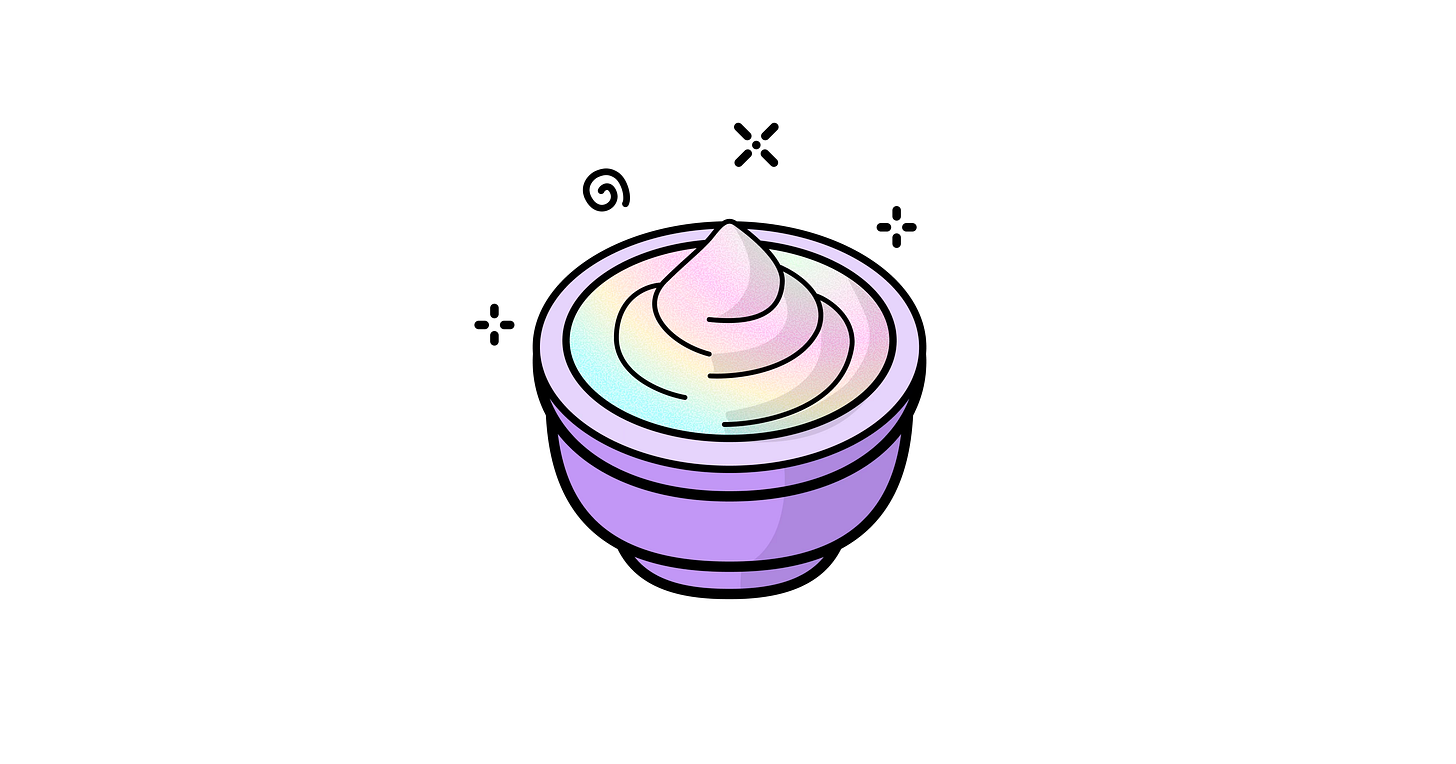Secret Sauce.
Why taste isn’t going anywhere in product design (and why it matters in the AI era).
Taste is one of those topics that sparks endless fights. Everyone has an opinion.
Nobody agrees.
Skeuo vs flat. iOS 7 and iOS 26. Minimalism vs maximalism.
These debates are as old as “should designers code”.
That’s the game. Taste feels subjective and random. But it’s not. It’s one of those invisible denominators that decide if your product flies or dies.
And right now, with AI flooding the world with slop and the best time to create new ventures, taste is one of the strongest edge you can have.
Not just as a designer. As a builder. As a generalist.
Here’s a short essay about taste in our industry. Don’t @ me.
Substack Launch Offer
Support The Playbook publication and access the whole issues archives as well as paid-only issues with the following special offer.
Most products work. Very few are actually loved.
The difference is taste.
Taste is what makes something timeless instead of trendy.
It’s what gives a product soul instead of utility.
Jony Ive’s “less but better” turned Dieter Rams’ philosophy into hardware that still feels clean decades later.
Not sure how long I will keep talking about Zenly (tell me if you’ve had enough) but for this topic, I guess it kind of makes sense.
On paper it was just dots on a map. In reality it was alive. Playful sounds. Quirky animations. Custom emojis that didn’t “need” to exist. Those touches made people care. Competitors copied features, even cloned the look, but they couldn’t copy the taste. Alongside strong tech innovation, that definitely was our moat.
Building amo from scratch pushed this further.
Endless discussions on how to position it in an “absolutely tasteful” way, by our definition.
We leaned into a specific mix: craftsmanship x pop culture x fashion.
The result was polarizing by design. Early versions felt too clean and too elite.
Lacking the warmth, the fun.
It was great, but not great enough for our taste.
Funny enough, very few people know this, but we had already started iterating in that direction with Zenly’s last design. The anti-chamber of amo’s vibe.
Our set of app icons was an attempt to break out into the artsy world by getting inspired by Arsham, Mondrian or Koons.
Taste isn’t just reflected through a big vision or fancy visuals though.
It sweats in the typography. The way a notification lands. The brand voice. The restraint to cut what doesn’t fit. It’s judgment. What should be done, not just what can.
This is why AI put taste back in the spotlight.
AI can generate anything. Logos, screens, whole websites in minutes. But it has no judgment. It doesn’t feel what’s right. It just spits out options.
Someone with taste uses AI like a jetpack. They iterate faster, explore more, and still land on something coherent. Someone without taste will most likely just multiplies the garbage with AI.
The gap gets bigger every day. AI doesn’t reduce the need for taste. It amplifies it.
Anyway, fancy words to basically say that AI taste is basically crap as of today.
What is taste anyway?
OG Meta designer turned investor Soleio, explains his definition:
Taste is Selection.
He compares it to a museum director walking her gallery, deciding which paintings deserve the prime wall. Her eye shapes what thousands will remember as beautiful. But she can only choose from what donors gave her, or what her budget allows. Donors buy what dealers offer. Dealers represent the artists the market deems viable. Those artists create within the limits of their training, materials, and cultural moment.
At every link, someone exercised taste. At every link, someone’s selection constrained the next.
Visitors praise the director’s exquisite eye. But whose taste are they really experiencing?
That’s taste. Not just instinct. Chains of decisions stacked on each other.
And now with AI, every designer is suddenly the museum director, except instead of 100 canvases, you’re offered a billion. Most are trash. Your taste decides what gets the wall.
The frustrating part is that you can’t download taste.
But you can sharpen it.
By marinating in great work. By noticing details. By forcing yourself to explain why something feels off. By absorbing art, film, architecture, and culture until your instincts get sharper. By learning form “taste makers” too.
You don’t sprint to taste. It’s slow. Painful. A lifetime process.
Every project, every iteration, every rejected option builds the compass.
Taste isn’t chaos. It’s discipline. It needs to be nurtured. Cultivated.
And once you build that layer, it shows. Your products reflect it. People start seeing you as a taste beacon in a noisy world.
Over time, your work gets dimmed as tasteful.
And that’s why products built on taste outlast the noise.
Remember Instagram’s 2016 redesign and logo freakout. Internet lost its mind.
Almost a decade later, who dares questioning this bold move.
Same story today, in 2025 by the time I’m writing this, with iOS 26.
Taste is subjective, sure. But time always reveals the difference between outrage and coherence.
My bet is: live with iOS 26 for a month then go back to iOS 18 to embrace the cringe.
Meanwhile, the world is drowning in AI wrappers and half-baked MVPs. Most won’t survive. Not because they don’t function, but because they don’t feel. They lack taste.
They lack emotion.
Taste isn’t decoration. It’s the secret sauce. It separates survival from irrelevance. You can’t teach it in a course. You can only cultivate it, through exposure, iteration, and ruthless editing.
AI will make the gap wider. Slop everywhere. A few gems that shine. Your taste decides which side you’re on.
Cultivate it. Apply it. Ruthlessly.
Julien.
I’m currently ramping up on my Offmarket project.
If you’re a designer looking for new opportunities. Freelance or full-time.
If you’re a designer struggling to land your dream job and looking for tips ang guidance.
If you’re a founder/cofounder looking to hire great talents and just want to get perfect qualified intros, without the cringe and the noise.
Subscribe and reach out here on Substack or on my LinkedIn.
Soft launching in October 2025.




